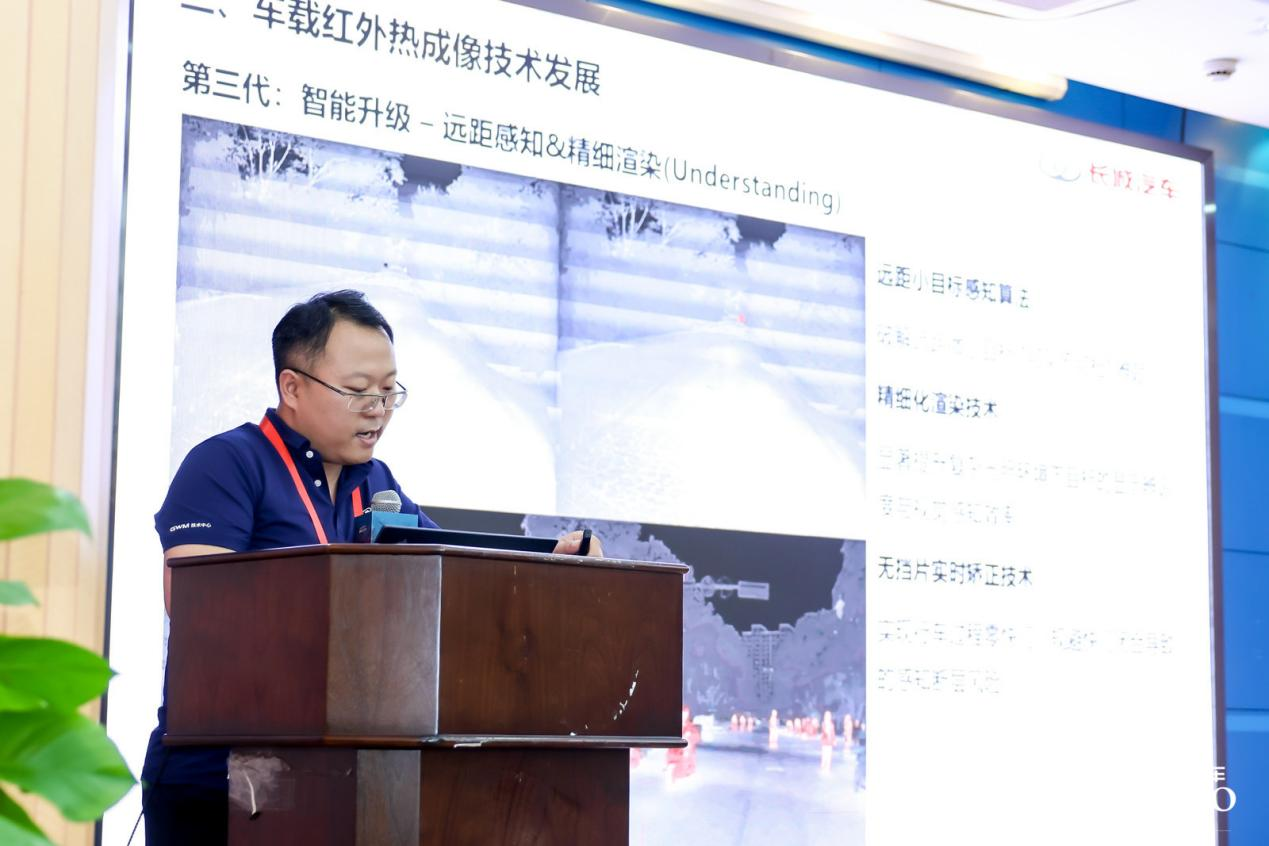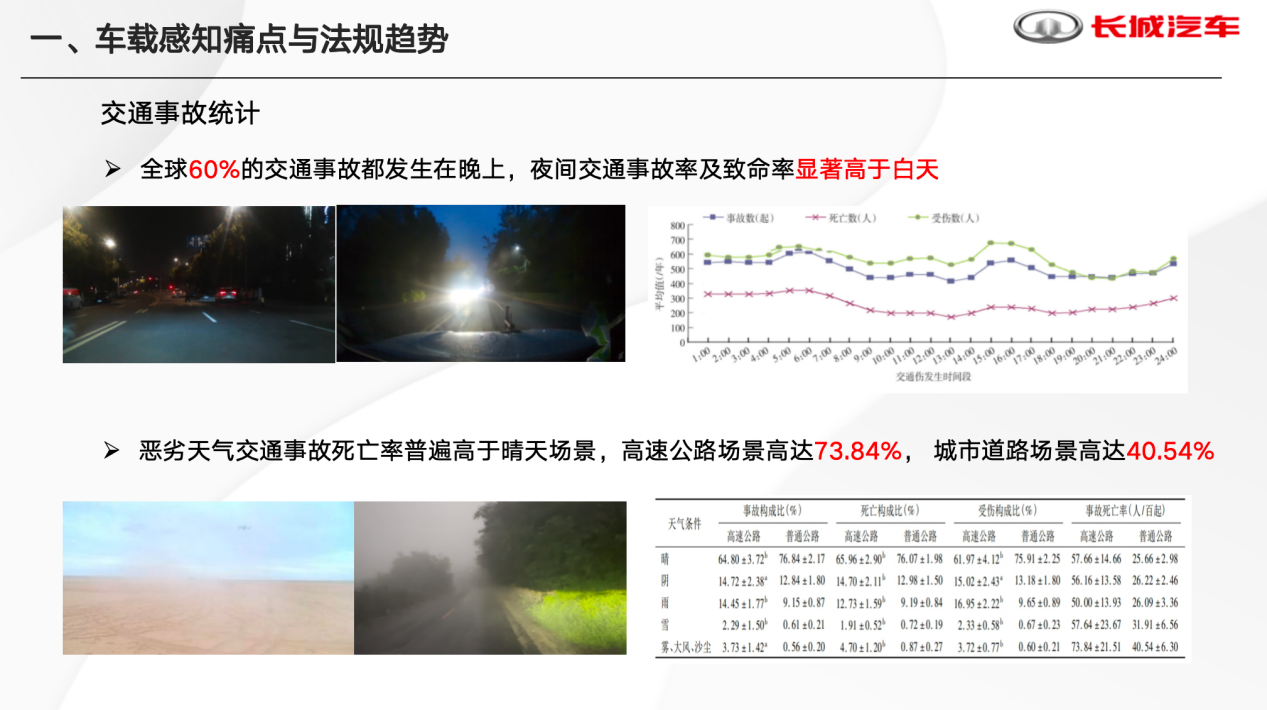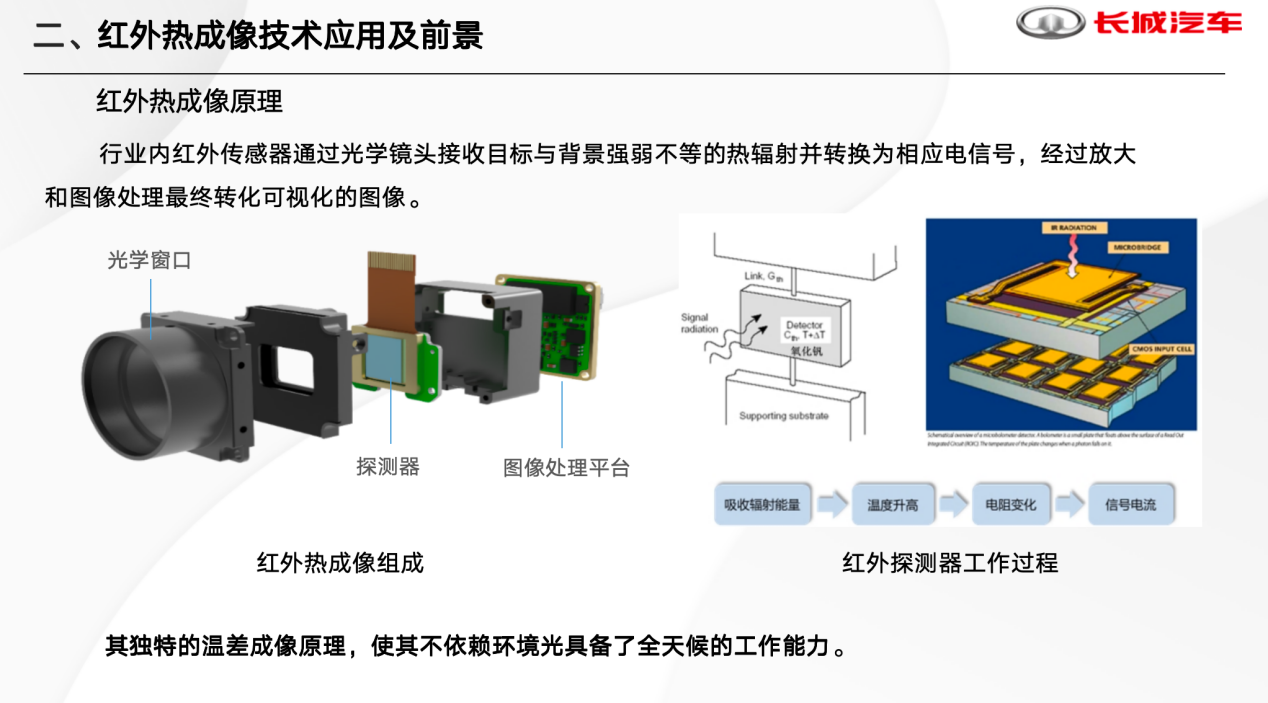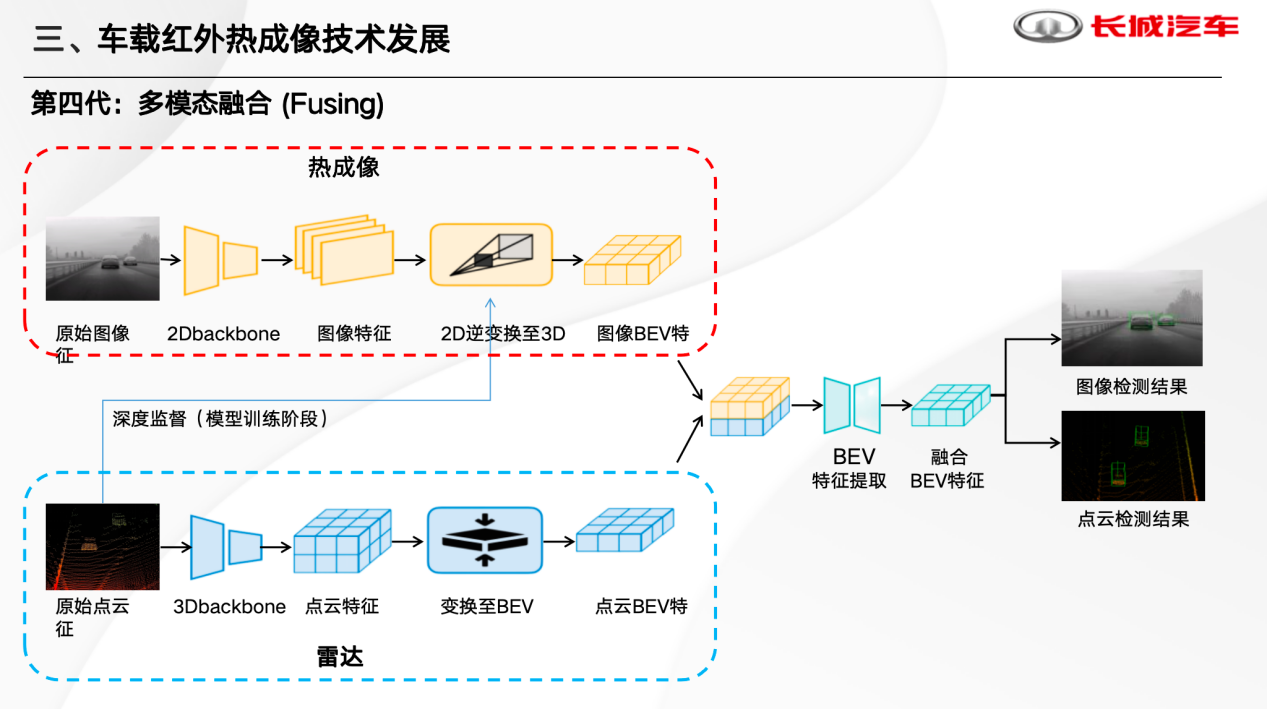On July 23, 2025, at the Automotive Smart Glass Innovation Technology and Application Conference, Xing Xiangyang, Chief Engineer of the Visual System at Great Wall Motors, analyzed the pain points of in-vehicle perception. He highlighted the frequent accidents that occur at night and in adverse weather conditions, pointing out the limitations of existing visible light cameras and LiDAR, while regulations on vehicle safety continue to tighten. In this context, infrared thermal imaging technology stands out with its unique temperature difference imaging principle, providing all-weather operational capabilities that effectively penetrate darkness and smoke, accurately distinguishing living targets from background, thereby offering innovative solutions to in-vehicle perception challenges. Xing noted that the development of domestic vehicle-mounted infrared thermal imaging technology has been vigorous, evolving from the first generation of passive display to the fourth generation of multi-modal fusion, achieving improvements in resolution, cost reduction, and functional optimization. The fourth-generation technology, through deep collaboration with visible light cameras, significantly enhances target detection accuracy and spatial awareness, becoming a key technology to meet regulatory requirements and ensure driving safety in all weather and scenarios. Xing emphasized the pain points of vehicle-mounted perception and regulatory trends, stating that visibility is limited for drivers at night and during adverse weather conditions, leading to higher accident probabilities. Data shows that approximately 60% of traffic accidents worldwide occur at night, with the incidence and fatality rates significantly higher than during the day. Moreover, the mortality rate of traffic accidents in adverse weather conditions is generally higher than in clear weather, reaching up to 73.84% on highways and 40.54% on urban roads. Behind these accidents are the pain points of vehicle-mounted perception. In dark or low-light environments, visible light cameras experience increased image noise, blurred details, or may fail entirely; in adverse weather, their performance declines, and LiDAR point clouds become sparse. Strong light interference can lead to backlighting and glare, preventing visible light cameras from capturing images normally. In response, regulations in the EU, China, and the US have clarified requirements related to vehicle safety. The EU's 2023 Euro-NCAP mandates AEB night tests and plans to gradually incorporate adverse weather scenarios like rain and fog through continuous updates; China's 2024 C-NCAP has implemented night AEB tests, and the draft of the mandatory standard "Safety Requirements for Combined Driving Assistance Systems" has added fog and rain test scenarios; the US federal motor vehicle safety standard FMVSS 127 will require effective pedestrian detection under various lighting conditions starting September 2029, directly addressing the high mortality rate of night accidents. The principles of infrared sensors in the industry involve receiving varying thermal radiation from targets and backgrounds through optical lenses, converting it into corresponding electrical signals, amplifying, and processing images into visual representations. Its unique temperature difference imaging principle does not rely on ambient light, enabling all-weather performance. Visible light imaging relies on the photoelectric effect, while infrared thermal imaging is based on the thermoelectric effect. The development of vehicle-mounted infrared thermal imaging technology has rapidly advanced since 2021, breaking international monopolies and realizing large-scale applications while further reducing costs. The first generation was a passive display with an early resolution of only 320×240 pixels and a high optional price of $2000, which severely restricted its widespread application. Following breakthroughs in materials and chip design after 2016, resolution improved to 300,000 pixels, and costs significantly decreased. The second generation introduced AI target detection technology to reduce cognitive load on drivers by constructing dedicated datasets for training models to extract multiple target information in real-time. The third generation enhanced long-range perception and fine rendering capabilities, while the fourth generation focuses on multi-modal fusion, enabling infrared thermal imaging to work in deep collaboration with visible light cameras, LiDAR, and millimeter-wave radar. This offers significant improvements in target detection accuracy and spatial awareness, ensuring reliable performance even in extreme conditions. Ultimately, infrared thermal imaging technology is poised to be an essential component of advanced intelligent driving systems, meeting regulatory requirements and ensuring all-weather, all-scenario driving safety.
Great Wall Motors Discusses Advances in Infrared Thermal Imaging Technology for Vehicles

Images



Share this post on: